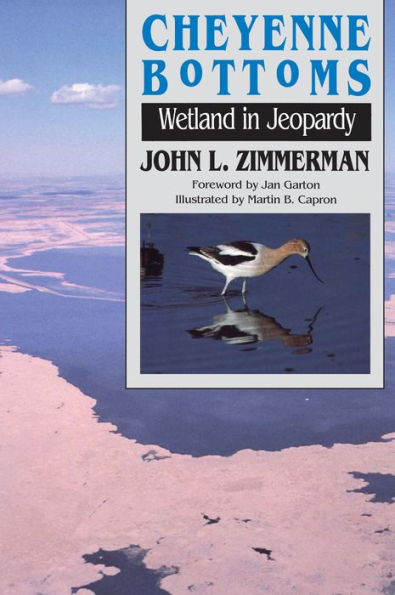Swamps are for draining—for converting into housing projects and farmland. Or at least that's been the theory ever since European settlers rolled across the continent a century ago.
We've drained a lot of swamps since then. Nationwide, we've "reclaimed" _____% of our wetlands. In Kansas, where we've been particularly diligent, only 4% of our original wetlands remain.
Now we realize we needed them. Wetlands, it turns out, are vital pieces of the unfathomable, intricate system that sustains life on earth.
Among the wetlands that remain, a few are outstanding for their size, location, and role in feeding and sheltering vast numbers of birds and other wildlife. Cheyenne Bottoms, waystation for hundreds of thousands of migrating shorebirds, songbirds, and waterfowl, is one of the most important wetlands in North America.
Located in central Kansas, on the main migration highway between wintering grounds in South America and breeding territory in Canada, the 41,000 acre marsh called Cheyenne Bottoms is a critical refueling stop for migrating birds. It hosts 90% of the populations of five species of shorebirds as well as most of the remaining population of the endangered Whooping Crane and several other threatened and endangered species. Because of its critical role, it has been designated by treaty as a wetland of international importance.
In this book, ecologist/ornithologist John Zimmerman provides an introduction to the Bottoms that is at once personal, impassioned, and technically accurate. He describes the Bottoms from many vantage points. He talks of its history, from its formation 100,000 years ago to the fight to preserve it today. He describes the life there—the rich variety of birds, mammals, and reptiles to whom Cheyenne Bottoms is home. He tells of the jeopardy in which the Bottoms finds itself—buffetted by vagaries of weather, climate changes, irrigation and water rights, and politics. He also traces the grass roots effort to save the Bottoms that brought together conservation groups, garden clubs, grade school and high school students, and the state government. Finally, he talks about solutions, both long- and short-term.



